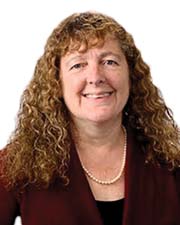
Who or what inspired you to join the construction industry? In the late 1970s and early 1980s, girls still tended to gravitate toward “traditional” careers. I excelled in math and wanted to make a difference in my community and help others, so I considered teaching and engineering. My dad encouraged me to be a teacher, so naturally I chose engineering. During my first semester at college I applied for and accepted a one-year internship with the Soil Conservation Service and helped farmers by designing manure pits. These were among the first systems to help clean our rivers and streams, and it was during this time that I decided engineering was for me.
What was your greatest professional achievement or most notable project in the last 12 months? I have been fortunate to be able to work on the 11-mile U.S. 7 corridor of Pittsford-Brandon, VT, which commenced with a scoping report. The project was divided into six separate projects, and I’ve worked on each one in a variety of capacities, from technician through project manager. We constructed the first project known as Segment 5 in 2010. Tropical Storm Irene hit Vermont in 2011 and although Brandon suffered significant damage, the newly constructed roadway suffered no damage.
When I’m not working... I volunteer with Engineers without Borders NH Professionals Chapter as the Treasurer. I’ve traveled to Uganda three times with our team and we’ve installed five wells serving five villages and 5,640 people. Prior to the wells, the villagers walked a mile or more to collect water from open sources, from which livestock also drank. The water was contaminated and caused intestinal issues. Reports state that they rarely experience these issues with the new wells, and people are able to spend more time at school and work. Providing life-sustaining water to those is need is both rewarding and humbling.
Who or what inspired you to join the construction industry? In the late 1970s and early 1980s, girls still tended to gravitate toward “traditional” careers. I excelled in math and wanted to make a difference in my community and help others, so I considered teaching and engineering. My dad encouraged me to be a teacher, so naturally I chose engineering. During my first semester at college I applied for and accepted a one-year internship with the Soil Conservation Service and helped farmers by designing manure pits. These were among the first systems to help clean our rivers and streams, and it was during this time that I decided engineering was the career for me.








